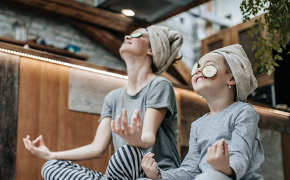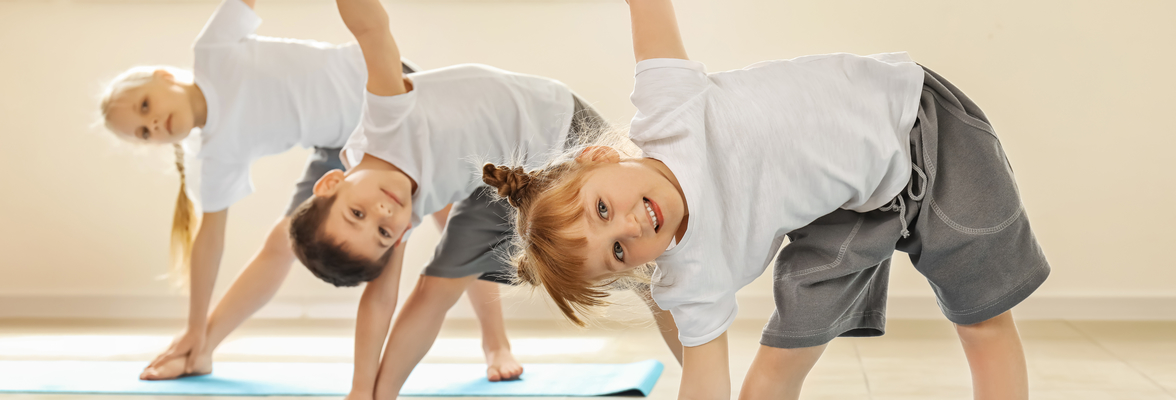Adults aren’t the only ones increasingly pressured by the pace and demands of modern life. Our kids’ lives are no longer quite the carefree days of freedom they once were. With increasing demands from school, standardised testing, social media, peer pressure, and competitive activities, children are in real need of some calming coping strategies and skills!
Yoga can help kids deal with daily pressures in various ways, by developing their self-awareness and ability to relax, their self-control and compassion. Combining non-competitive physical activity, breathing exercises, and meditation, this ancient practice has been shown to increase coordination and balance, improve strength and flexibility, and build concentration. In fact, a University of Massachusetts study in 2014 showed that yoga improved school children’s behaviour, and academic performance too!*
But how do you hold the attention of young minds– long enough to complete a sun salutation or downward dog? Won’t kids get bored?
We’ve got seven ‘Tiny Tips’ for anyone who’s looking for some guidance in introducing children to Yoga– from basic poses, to useful strategies that will make your session more like play and less like work.
1. HAVE FUN, TELL A STORY
While you may take your own yoga practice quite seriously, the first and most important rule of engaging youngsters in any new activity is to make it FUN! This means putting on your creative ‘hat’. Try introducing yoga with games, storytelling, or singing– could you go on an imaginary ‘safari’, meeting all the animals in the jungle along the way?
Or an underwater adventure, swimming like a fish, diving like a dolphin, or slithering like an eel? Or climbing a mountain, soaring like an eagle, and standing tall like a tree? Beginning with a destination, give your yoga session a story– this will help to connect one pose with the next, keeping the energy flowing, and children engaged and entertained. A story helps them to visualise and engage their imagination as they learn, which boosts their ability to remember.
2. BE CREATIVE
Many traditional yoga poses are already named after animals or objects in the natural world–but feel free to rename them together! ‘Warrior Pose’ might become ‘Airplane’…. while ‘Child’s Pose’ might be renamed ‘Sleepy Turtle’. Show your kids the posture, have them copy you, and brainstorm a name together.
We’ve put together a collection of simple poses that are easy to learn, even if you’re a complete beginner. Many of these postures are named for animals, to spark your imagination and help incorporate them into a story, like characters… Enjoy!
3. CAT AND COW
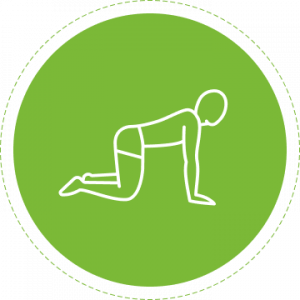
This one gives you two farmyard animals for the price of one! Balance on all fours (hands and knees). Drop the belly, scoop out the back and look upward for Cow Pose… you can also sway from side to side a little, as if swishing at flies with your tail. Then, slowly, arch the back upward–like an angry cat– and tuck the chin toward the chest for Cat Pose. Alternate back and forth smoothly, encouraging them to breathe in for each ‘Cow’, and out with each ‘Cat’. This combined pose helps to stretch out the spine and neck, relieving tension and opening the lungs for deep, calming breaths.
4. SLEEPY TURTLE (CHILD’S POSE)
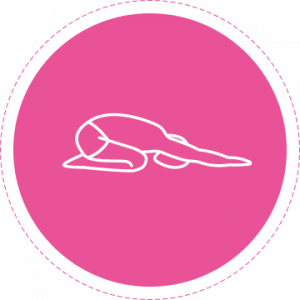
Kneel down and fold the torso forward, stretching the arms out directly ahead–palms lying flat on the floor. Looking downward, encourage them to reach as far as they can, while pushing the tailbone back over the heels. This pose not only stretches the spine, it gives children an opportunity to be more introspective–they aren’t distracted by other people or whatever else is going on in the room. This can help them to settle down into a more relaxed, centered mood– particularly helpful before bed.
5. ROARING LION (LION POSE)
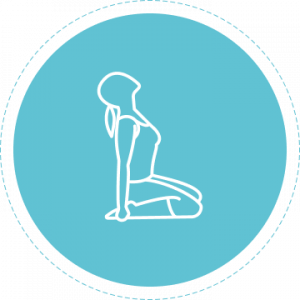
Kneel on the shins, with chest folded toward the thighs. Breathe deeply, in and out. Explain that this is the Lion ‘preparing to pounce’– trying to be as still and quiet as possible. Then, spring the upper body forward and upward, breathing out (or roaring!) like a lion, with the tongue sticking out. An adaptation of a traditional posture, this animal pose is a great introduction for kids in a high-energy state, or who struggle to contain their excitement. Warning: will most likely result in a lot of giggling!
6. SOARING EAGLE (EAGLE POSE)
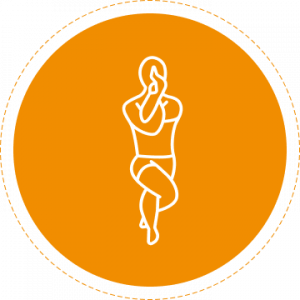
Stand up straight and tall. Slightly bend the knees. Balancing with the arms pointing out to either side, cross the right leg over the top of the left leg OR place the sole of the right foot against the left leg. Point the elbows straight out in front, bend the arms upward and cross the right arm over the left. If possible, place the palms together. Breathe and balance to the count of four, and then slowly switch sides. This pose assists with concentration, focus, and confidence. Balancing successfully can give a sense of achievement to children who are feeling anxious, nervous, or unsure of themselves.
7. BREATHE DEEP (SAVASANA)
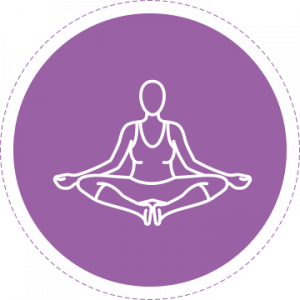
Yoga is a perfect opportunity to introduce a few simple breathing and meditation techniques for children, giving them the tools they need to regulate emotions, calm nerves, or relieve stress. The foundational Yoga pose known as ‘Savasana’ is often used at the end of a session for deep relaxation. Lie flat on the floor, with the feet about hip-width apart and arms slightly away from the body, palms facing upward. Close the eyes and breathe deeply. At this point, you could even introduce some visualisation–for instance, imagining a warm ball of light in the center of the chest, which grows bigger and bigger until it fills the whole body. You’d be surprised how easy–and fun– children find it to visualise!
Yoga and meditation have almost infinite variations and applications… but there are plenty of kid-friendly adaptations to help your youngsters slow down, re-connect, and learn how to listen to their bodies. But beyond the obvious benefits, it might also be an opportunity for them to learn about geography, animals, science, the alphabet, or new vocabulary!
*Source : https://journals.sagepub.com/doi/pdf/10.1177/2156587214557695








